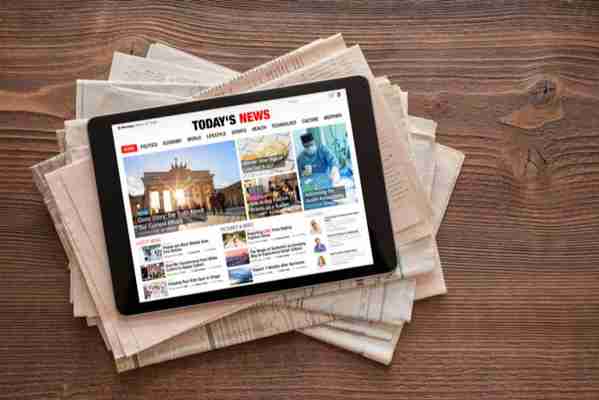With the well-documented rise of podcasting and a whole internet full of information, it doesn’t seem like we’re wanting for more content.
But as people have given up on their local papers and established publications increasingly gate their content, the idea of paying for digital subscriptions has left us wondering: do more paywalls reduce access to reliable news?
Internet users are accustomed to accessing content for free, so paywalls have kind of always had an uphill battle to fight. In theory, they don’t seem completely unreasonable.
Unfortunately, there’s no “right” to reliable, balanced news. And, according to the Brookings Institution putting the news online hasn’t really helped media channels make more money.

Paywalls aren’t new
The paywall has been around since 1997. Pioneered by the Wall Street Journal, the initial experiment with the revenue stream was fairly successful. However, most general news outlets had concerns that paywalls would reduce readership and, thereby, digital ad revenue.
The American Press Institute found that 53% of people pay for news. The report found that people are more likely to pay for digitally native sources than for the digital version of a newspaper.
Maybe there’s an idea that if you’re going to pay for something, you want high-quality content — interesting reads like long-form pieces from the New Yorker or Wired.
Local news brings politics and breaking stories, but also high school football scores.
There are also resources like PBS and NPR, those who rely on donations to pay for quality reporting.

10 Tricks for spotting fake news
Higher quality niche publications charge a lot
Recently we came across an episode of the Atlantic debate podcast , Crazy/Genius entitled, “Are We Killing Local News?” The two sides looked at the viability of paywall content, and whether it could save the journalism industry.
The pro paywall guest, a former Denver Post managing editor, started a new publication that charges about $500 a year for in-depth tech sector coverage.
The idea is, they can afford to pay reporters to spend a lot of time doing investigative work and can provide news that not every free publication will be able to push out there. So those people who need to stay in-the-know can pay for a quality publication that could potentially give them a leg up in the space.
That model is a lot like professional associations which provide members with access to studies and content that not everyone can read.

How to personalize your Apple News feed
There’s also Politico Pro , which has been around since 2011. It charges their subscribers a yearly fee in the mid-four-figures for in-depth coverage of topics like healthcare and energy. A subscription to the New York Times isn’t especially prohibitive — they have a number of deals— the newspaper is a dollar a week for a limited time.
But, say you pay for NYT, the Washington Post, maybe Wired, too. Add in your local paper, and your media budget for the year starts to climb.
Which begs the question, how many people lose out on quality information because they can’t or won’t pay for multiple publications?
If local news adopts this model, that means that some communities won’t hear about the things that affect them on a daily basis.
Many people may be okay with paying for content, but it definitely leaves out a wide swath of the population — and eventually, could limit access to voter information that allows lower income folks to make their voices heard.
Is it fair that we have to pay for quality knowledge?
It depends on how you frame this question.
Good content is worth paying for — those who create it are putting in a lot of work that has value.
Plus, the Media Insight Project said that four-fifths of respondents in a recent poll said they were happy with their subscriptions.
Most subscriptions are about $10 per month, a little cheaper than a Spotify account or Netflix, so it’s not this huge investment.
The issue that arises though is that lower-income people might lose access to good information.
Yes, it’s fair to gate access to certain things — especially if you view media as entertainment in the same vein as things like Audible, Hulu, Netflix, or Spotify.
But we will need to do something about the potential widening knowledge gap , as well as the rise in fake news.
As people rely more on social media for breaking news, readers lose out on accurate reporting, local issues, and scientific breakthroughs. Those who can afford industry subscriptions can access information not everyone can access.
Still, there are public radio stations like PBS and NPR that offer free news to all — maybe that’s a lifeline we should do more to nurture. Although those outlets are often targets of budget-slashing politicians, PBS costs just $1.35 per citizen per year.
After destroying local news, Facebook throws $300 million at local news
